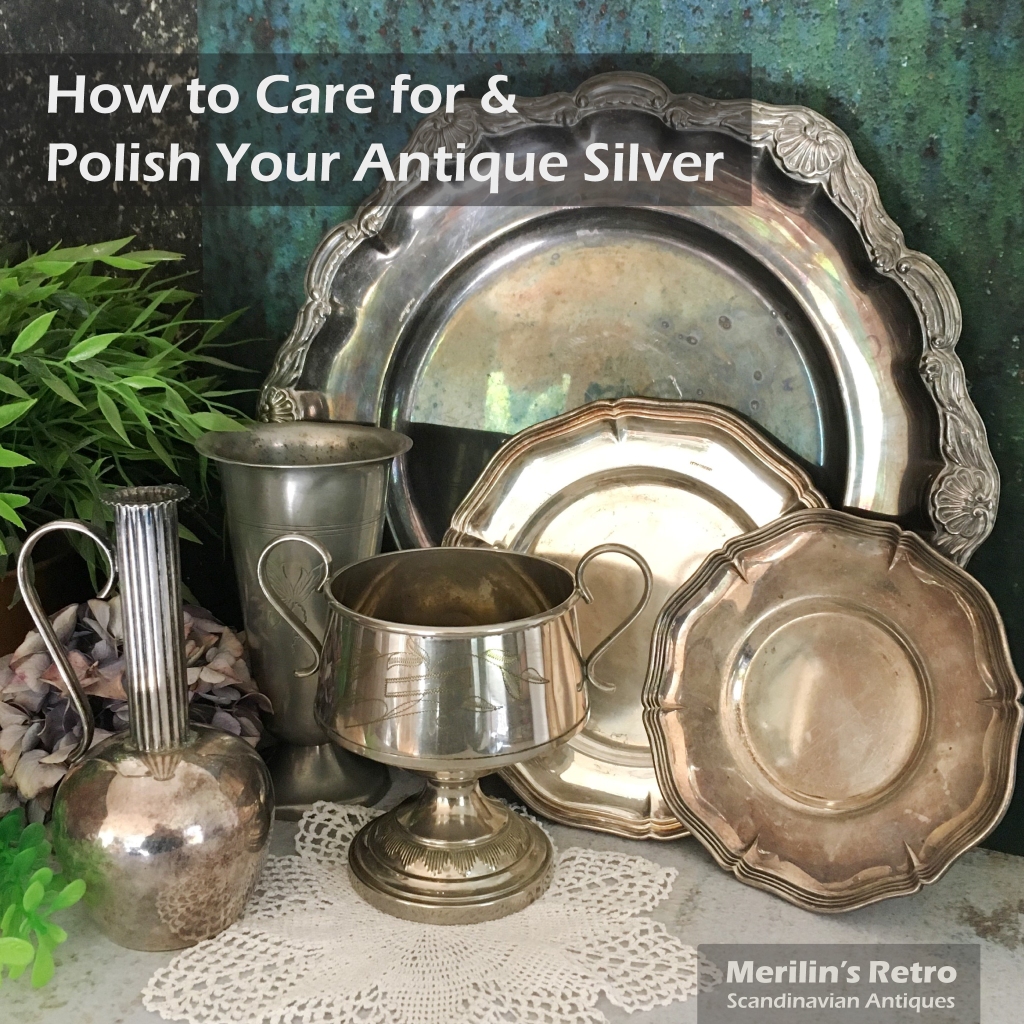The content of this article provides useful tips on how to care for and polish antique silver. It explains the process of tarnishing and offers recommendations for cleaning and storing silver.
Silver is a beautiful metal that has been used for centuries to create jewelry, coins, flatware and other decorative objects. However, one of the most common concerns about silver is its tendency to tarnish over time.
Best Tips for How to Care for and Polish Your Antique Silver
Here’s how to clean and care for plated or sterling silver (whether it’s flatware, jewelry, or larger pieces) so that it can be enjoyed for generations.

How does silver tarnishing happen?
When exposed to air, silver reacts with hydrogen sulfide (H2S) gas to form silver sulfide (Ag2S) on the surface of the piece. This thin layer is dark and discolored, making the object look dull and tarnished.
A humid climate and highly polluted atmosphere influence tarnishing, as well as household bleach and strong chemicals.
Silver was created to be used every day and using it reduces tarnish. Using your silver is so much better than keeping it in a cabinet for holidays only. Don’t forget to rotate the pieces of your large service so that they all get the same amount of wear, and patina over time.

How long does silver take to tarnish?
Silver can take months to two years to tarnish. Silver tarnishes faster the longer it is exposed to the air, humidity, pollution, and chemical substances. It is essential to remember that it is not permanent. Tarnished silver is quickly recovered using the proper materials. Sterling and plated silver don’t rust.
How to Care for Silver?
After using your silver, hand-wash it with mild citrus-free soap, warm water, and a soft sponge. Hand-dry your silver with a soft microfiber cloth, gently buffing it to revive its shine. Do not allow silver to air dry as water left on it can cause unattractive spotting.
The heat and harsh detergents of the dishwasher will eventually whiten your silver. If silver touches stainless steel while in your dishwasher, it can develop black spots that never come out.

Tips for Cleaning Silver
If your piece is lightly tarnished, try cleaning it before polishing.
- Never put your sterling silver in the dishwasher, because it can damage the pieces.
- Certain foods like eggs, onions and mustard can make silver tarnish faster. Wipe or rinse those foods off immediately after eating.
- Avoid exposing sterling silver to tarnish-producing materials like wool, rubber, felt and latex.
- Avoid using anything abrasive to clean, including paper towels, rough sponges, scouring pads, or steel wool.
To keep larger decorative silver bowls, trays, and candlesticks gleaming use a pair of special silver mitts or polish cloths. Impregnated with a gentle silver cleaner the polish inhibits the tarnish.
How to Polish Silver?
Electrochemical Cleaning involves placing silver in a plastic bowl lined with aluminum foil and filling it with boiling water plus baking soda and vinegar. Silver cleaned this way also looks like stainless steel, loses its patina, and tarnishes far more quickly afterward.
There are many commercial silver polishes on the market that you can try if your silver is stubbornly tarnished. Recommended silver polishes include Goddard’s Long Shine Silver Polish, Wright’s Silver Polish, and Twinkle Silver Polish. These products are gentle, so many others, including the so-called all-purpose metal cleaners, are too abrasive and will scratch your pieces and strip a layer of silver off.
Before using any sort of silver polish, always read the instructions and follow them carefully. Over-enthusiastic polishing can rub off hallmarks and remove the silverplate, revealing the base metal underneath.

How to store silver?
Never store silver flatware loose in a drawer because it will scratch easily and tarnish quickly. Avoid wrapping it in a newspaper or storing it in cardboard boxes that aren’t acid-free.
Store your silver forks, knives, spoons and serving utensils in a cutlery chest lined with anti-tarnish silver cloth, or in a drawer lined with silver cloth. The best way to store your silver is wrapped in sulfur-absorbing flannel.
If you don’t want to invest in treated flannel, which can be quite expensive, a cheaper alternative would be to individually wrap your silver in buffered, acid-free tissue paper and store it in a zip-top bag.
Regardless of which method you choose for wrapping your silver, you can also add silica gel to the container or drawer to help absorb humidity. Silica gel is also reusable – just dry it out in the oven and it can be used indefinitely.
Create a Legacy
Silver, taken care of right, is not only a joy to live with today but also to pass on to children and grandchildren.
Use these simple tips on how to clean silver to keep your silver in good condition, and you’ll have a priceless heirloom that can be passed down from generation to generation.
Pin This Silver Care and Polish Guide for Later

Explore our collection of Antique Silverware
For More Inspiration Follow Along with Merilin’s Retro
www.merilinsretro.etsy.com
www.facebook.com/MerilinsRetro
www.pinterest.com/meriliin
www.instagram.com/merilinsretro
We invite you to join our Merilin’s Retro blog community to read interesting stories about history. We collect vintage and antiques from Estonia and Scandinavia and sell worldwide.
Check out our Etsy store to find more splendid vintage and antiques!
Add MerilinsRetro to your ♥ FAVOURITE SHOPS list on Etsy and you’ll be amongst the first to see the newest beauties in our shop!